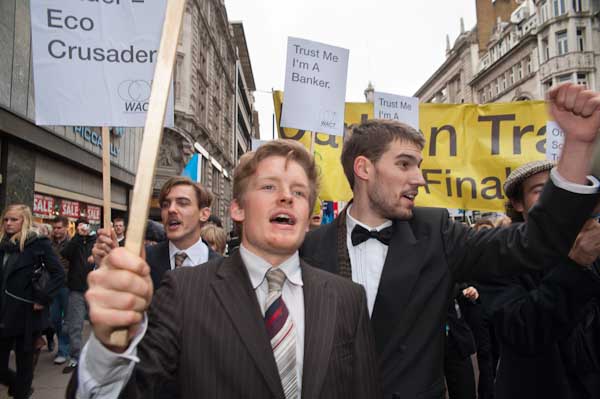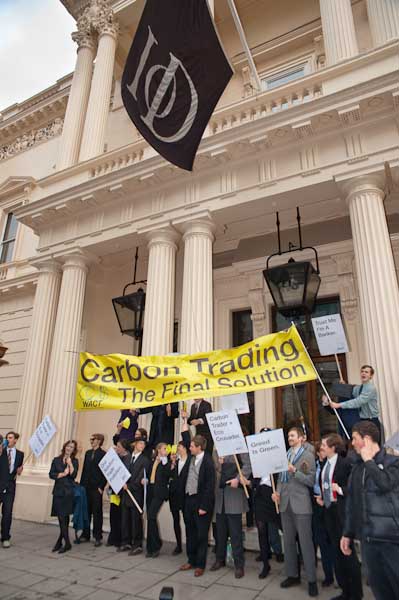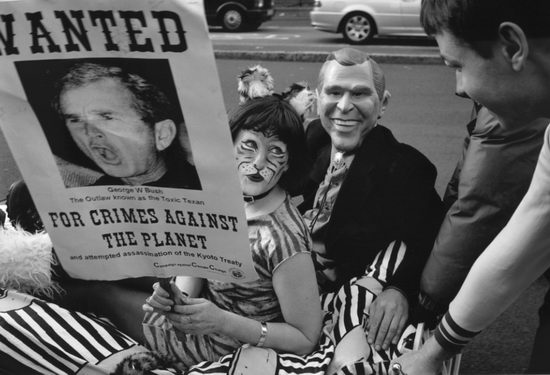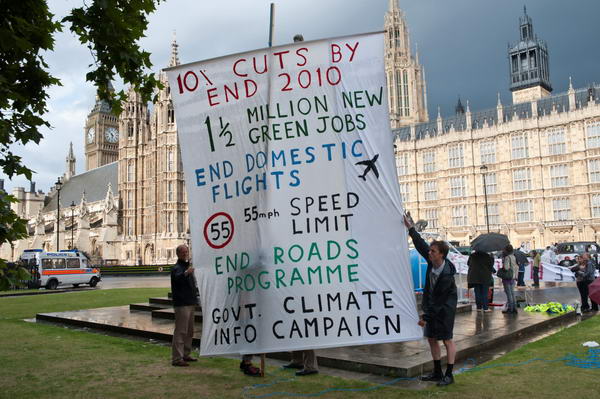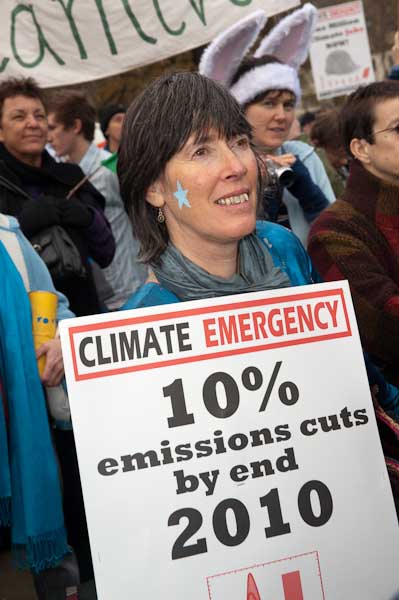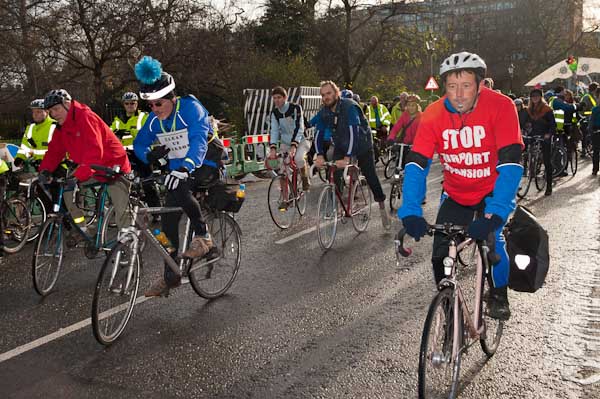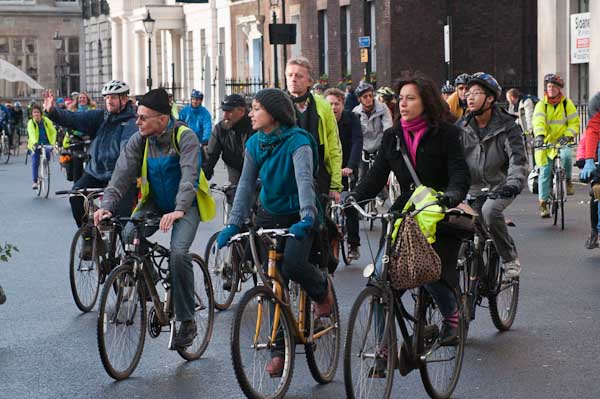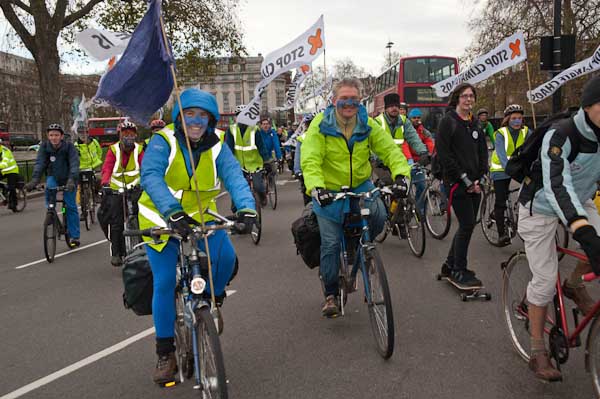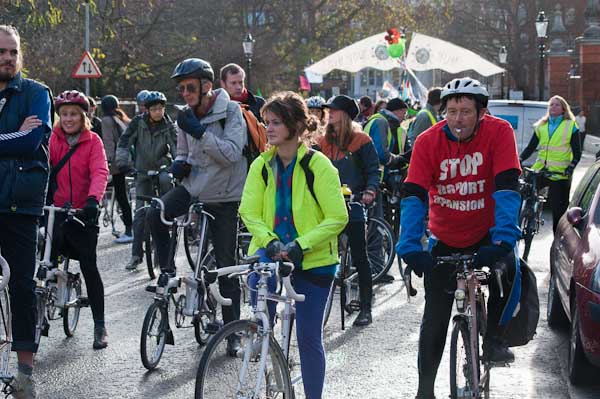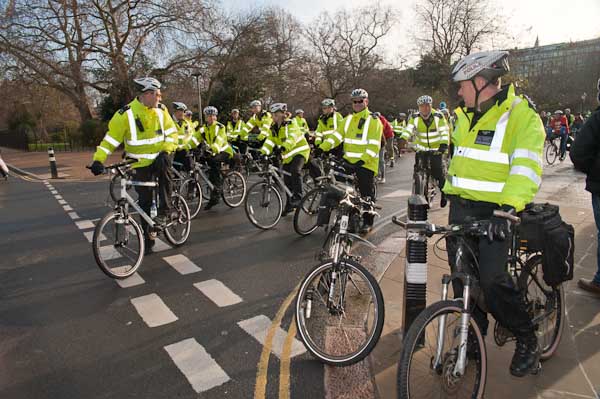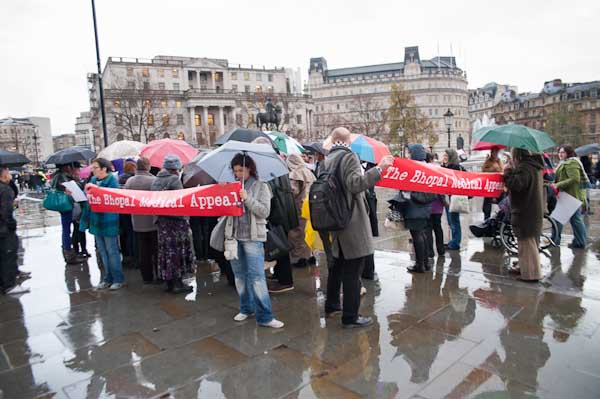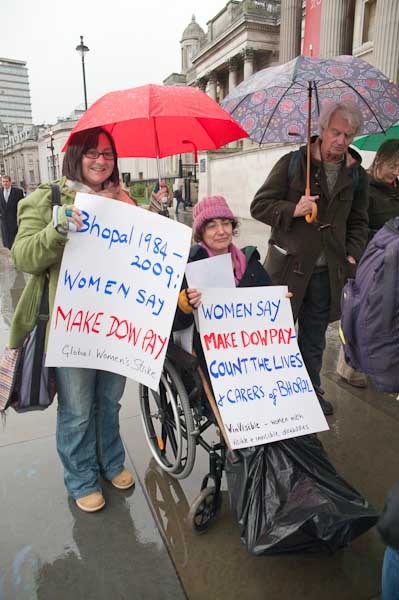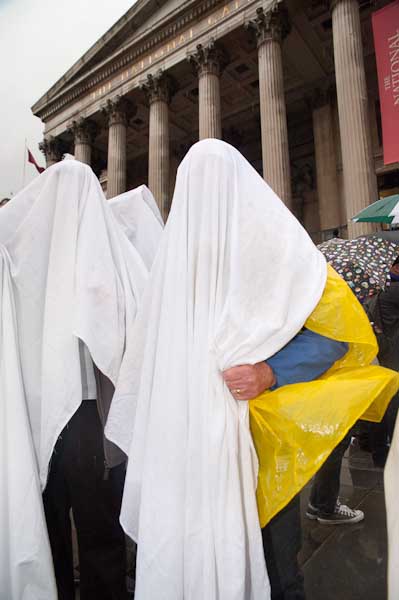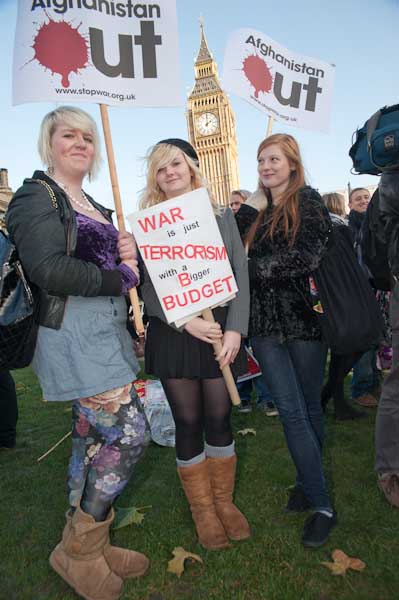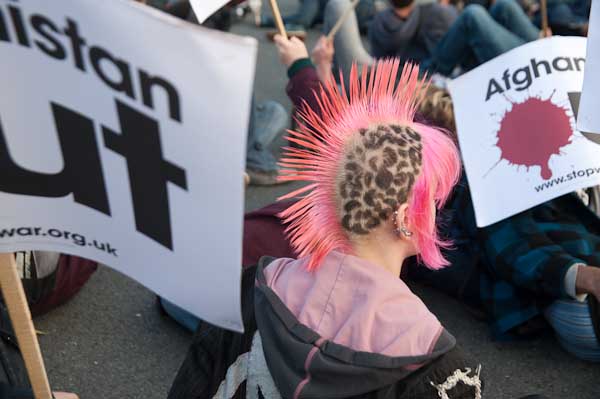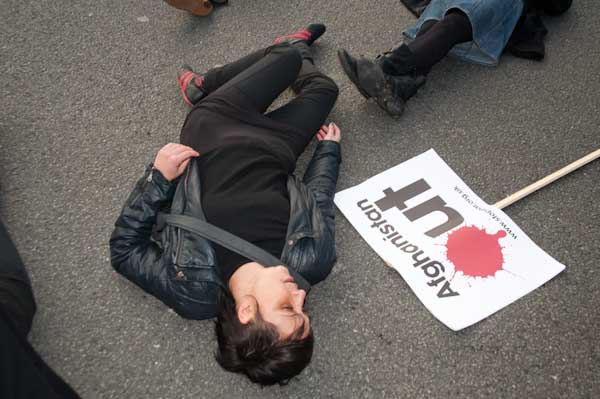Last Wednesday, 1 December, was exactly 8 months since the death of Ian Tomlinson after a police assault at the G20 protests. The Ian Tomlinson Family Campaign wants a full investigation to find out what happened and to bring those responsible for his death to justice.
They decided to hold a public Candlelit vigil in Royal Exchange Buildings where he was assaulted and invited the press and others to attend. I’ve written a more detailed account of the event on My London Diary (and also on Demotix) so I won’t repeat the details here, where I want to look mainly at some of the problems in photographing such an event.
Firstly of course there were perhaps 30 other professional photographers there- including some from the national press and the picture agencies as well as other freelances, along with several TV crews and some other videographers. This made it fairly difficult – and at times impossible – to get into the positions for taking the best pictures (and also means that the chances of getting my pictures used in the news media is even lower than usual.) Working in confined spaces with professional photographers generally isn’t too bad – everyone appreciates the problem and within reason people cooperate with each other (with a few exceptions.)
Working with digital has actually made it a little harder, with a growing tendency by some photographers – even when working with DSLRs when they can’t see the image – to hold their camera out in front at arms length to take pictures – and usually getting it into the frame of the rest of us. They wouldn’t actually walk in front of us to take a picture, but somehow they seem to think it’s ok to shove a camera out there.
Working with videographers, particularly from the TV stations can also be rather difficult. They tend to like to set up on large tripods and take and stay in a good position, and sometimes feel they have a right to barge in front of stills photographers. Actually on this occasion they didn’t do so, but it still creates a barrier to movement in a way that still photographers don’t.
The light in Royal Exchange Buildings was fairly dim – it’s a pedestrian area and not particularly brightly lit. I’d prefer not to use flash for a candlelit event, or at least only to use it sparingly to keep the effect of the candles. Using too much flash – as the the first picture – does create a very artificial effect an, with flash on camera particularly, does rather make people look like cardboard cutouts.
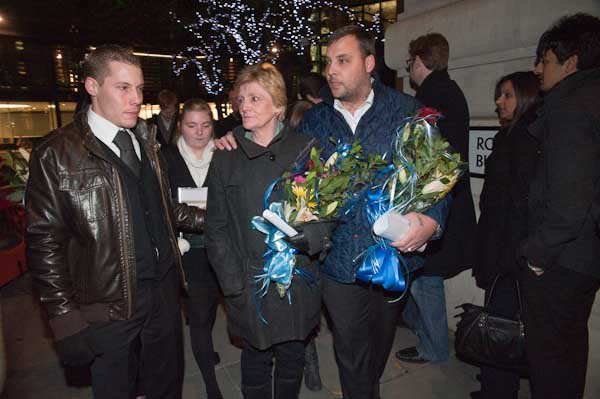
The Tomlinson Family arrive at the memorial event
This was taken at ISO2000, 1/60 f9, and flash is the main light source. The aperture ensures that I have sufficient depth of field to keep everyone sharp and even at f9 the ambient light does give some – if limited – background detail at 1/60s. I’d started taking pictures as they walked towards the event, moving backwards as they came; I hadn’t wanted to get in their way or stop them, but seconds after I started taking pictures I found myself with other photographers on both sides and behind me shooting over my should and I – and the family – had to stop.
From there I managed to find a space crouching in front of the TV cameras and very close to the family. Having taken a few pictures with flash to make sure I had something sharp – if rather boring – I stared working by available light. Using the Sigma EX 24-70 f2.8, exposures were pretty variable, ranging from 1/20 to 1/60 at f2.8 to f3.5 at ISOs between 1000 and 3200. Many frames were not sharp due to subject movement or camera shake, and the limited depth of field. The lens is just very slightly soft at f2.8 but good enough to use, particularly in difficult conditions.
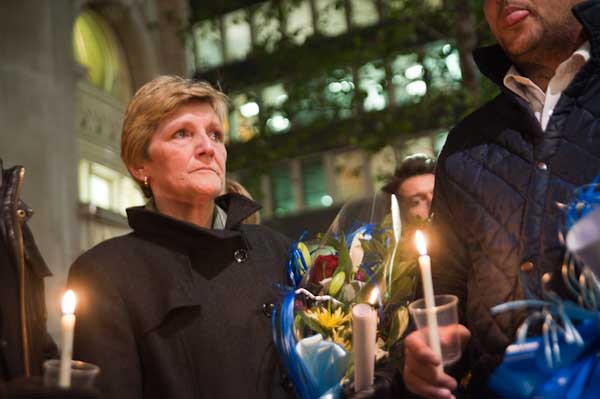
Mrs Julia Tomlinson
Flash is of course more intrusive, and although we had been invited to photograph the event and I wanted to produce pictures that might generate more publicity for the family campaign, I still found it hard at times to take pictures and wanted to do so with the minimum of intrusion. So when the family moved to the spot where Ian Tomlinson actually collapsed and died I needed flash to prevent blurring when they were laying flowers, but went back to available light to photograph them paying their respects after a short prayer from the minister present.
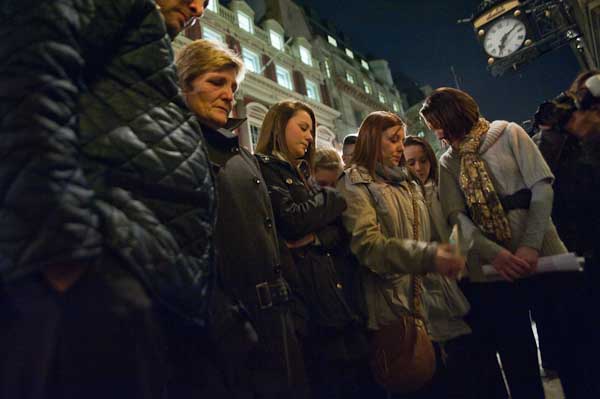
But after taking this I was not sure if it would have sufficient depth of field (looking at it now, although only Ian Tomlinson’s widow is really sharp, the image still works) and decided I had to take a similar picture using flash.
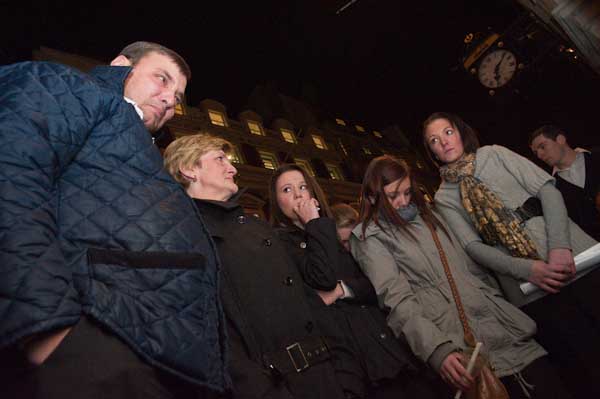
It is sharper, the colour is more accurate. Although probably I could process the raw file rather more carefully to get a better result, I think I prefer the atmosphere of the exposure using available light.
The story made the front page on Demotix, and I also published it on Indymedia, as well of course with a few more pictures on My London Diary.
